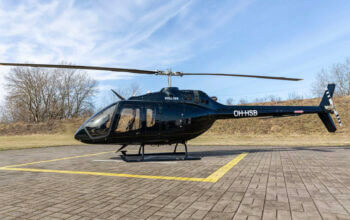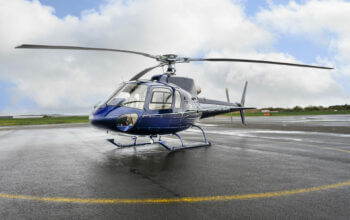Estimated reading time 4 minutes, 58 seconds.
The economic turbulence hitting the air transport sector this year after a post-recession rebound in 2010 can be expected to worsen. The question asked by The Conference Board of Canada in its latest industry review is whether Canadian operators can weather a situation exacerbated by higher fuel and other costs.
“Air traffic posted robust growth early in the year, but the gains have slowed since April,” the think-tank explained, citing Transport Canada figures showing that the 25 busiest Canadian airports handled an average of 5.6 per cent more passengers in the first four months of 2012, compared with a year earlier. That included a 6.2 per cent gain in domestic volumes, but growth began to decelerate in May and June.
Carriers flying within and to Canada have already adjusted their capacity to match this downward trend. British-based OAG, which bills itself as “the market leader in flight schedule data,” said Canadian domestic capacity was expected to be up by only 0.7 per cent in the second half of 2012, a significant retrenchment from 4.5 per cent in the first half.
The number of seats available on international flights to Canada is following a similar trend overall, varying by market. U.S.-Canada availability was expected to increase by seven per cent in the second half of this year, mainly due to increased Toronto-New York service by Air Canada, Porter and WestJet. Overseas seats were expected to decline by 2.2 per cent.
“Growth in the number of Canadian passengers travelling abroad – one of the key drivers behind the industry’s expansion over the past decade – is expected to slow in coming years,” the Board reported. The annual average increase was six per cent between 2001 and 2011, but those occurred when the Canadian dollar was steadily appreciating.
“Now that the Canadian currency appears to have stabilized, and with Canadians carrying heavy debt loads and being more cautious when it comes to discretionary spending on leisure and travel, such a robust pace of growth in foreign travel is unlikely moving forward,” read the Board’s report. Potential for growth in the number of international visitors is expected to be similarly “limited” after nearly zero growth over the past decade.
Canadian carriers are already trying to improve their market shares. Air Canada, for example, plans to launch another discount airline in 2013 to take on Air Transat and Sunwing. Porter and WestJet have been busy signing interline and code-sharing agreements with major international airlines, which will probably mean more passengers on foreign carriers and fewer on Air Canada. Also, further cost pressures will result in lower profit margins.
Then, there is the European economic crisis, which has global repercussions and which is expected to mean fewer Europeans travelling to Canada for business or pleasure. The United States recovery, which had regained some momentum at the start of this year, has been sideswiped by the European situation. There is concern that deficit-reduction measures could push the U.S. back into recession, with fewer Americans travelling. “U.S. travellers account for a vital portion of the industry’s customer base – a portion that has shrunk considerably over the past decade.”
If all of this weren’t enough, the recent slowdown in China is creating uncertainty, because Chinese visitors have recently been a major source of growth for Canada’s travel industry. “If . . . Chinese consumers become more cautious when it comes to spending on travelling, China’s positive impact on the Canadian air transportation industry could be less than expected.”
As for industry balance sheets, while WestJet saw its revenues increase by more than 12 per cent during the first half of 2012 compared with a year earlier, Air Canada’s rose by less than five per cent, due to ongoing labour unrest that resulted in a decline in bookings. Also, Air Canada’s capacity was slightly reduced by the closure of its Aveos maintenance and repair division.
“Revenues are expected to grow at a much slower pace than what we have seen since the end of the recession, as the increases in both prices and traffic will moderate,” the Board says. “Consumer and business confidence will continue to be fragile, which will lead to more cautious spending on travel.”








